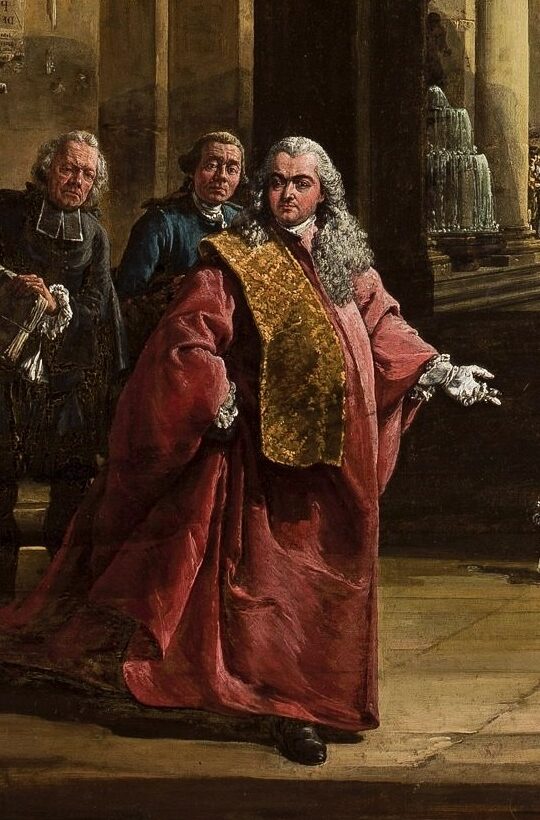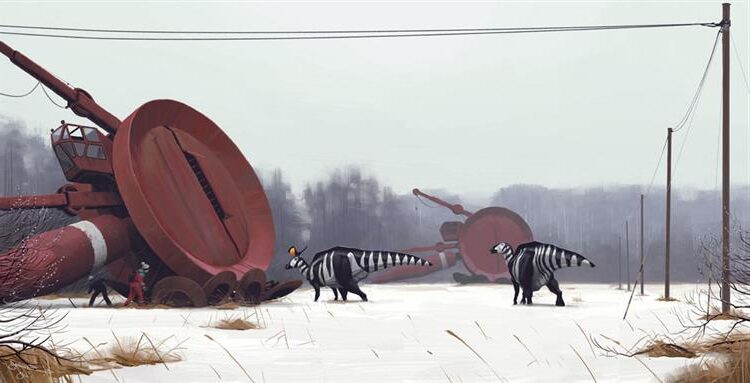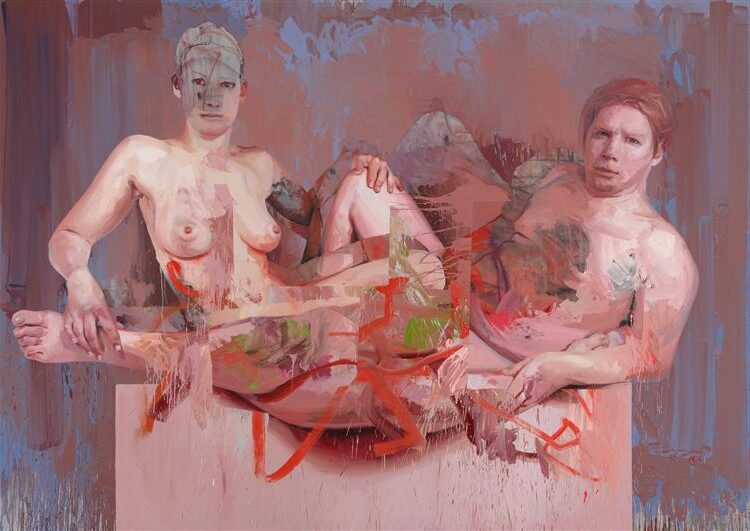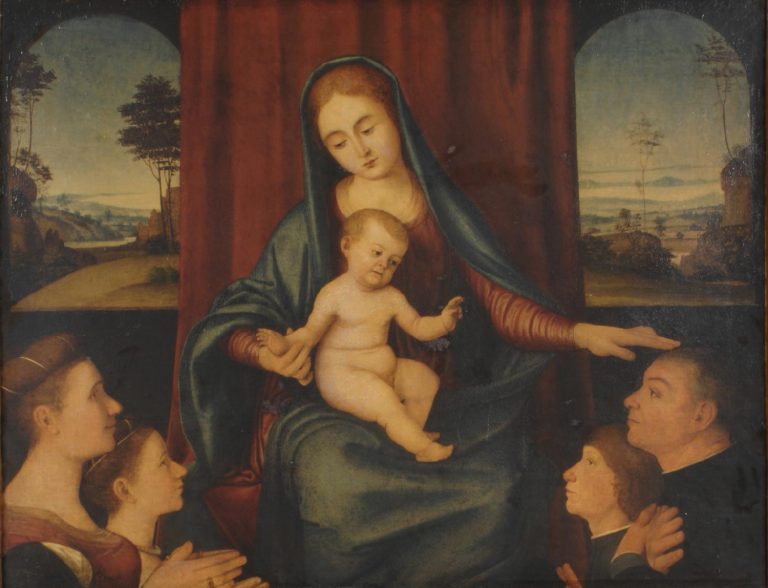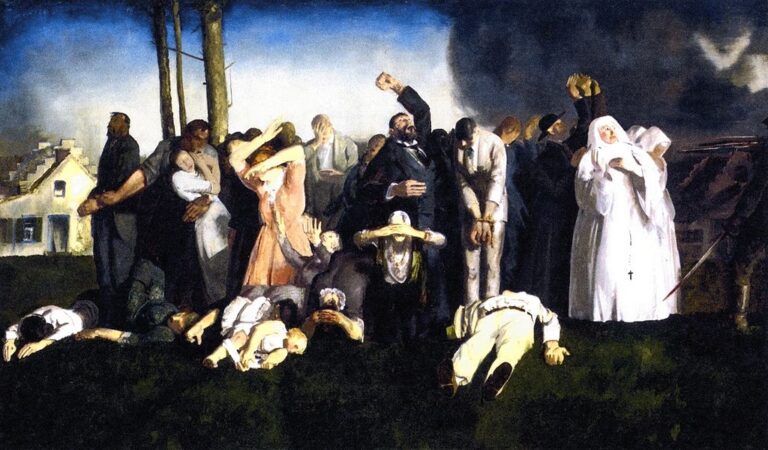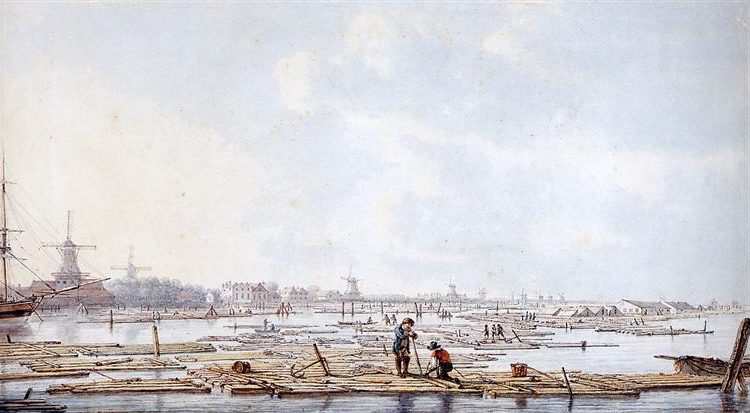Bernardo Bellotto: Painter Who Revolutionized 18th-Century Urban Landscapes
Born: 30 January 1721, Venice, Republic of Venice
Death: 17 November 1780, Warsaw, Polish–Lithuanian Commonwealth
Mouvement artistique : Rococo
Nationalité : Italien
Teacher: Giovanni Antonio Canal
Bernardo Bellotto: Painter Who Revolutionized 18th-Century Urban Landscapes
Life and Career of Bellotto
Bernardo Bellotto established himself as one of the most important vedute painters of the 18th century. His precise architectural paintings created a visual record of European cities that remains valuable to historians today.
Petite enfance et formation artistique
Bernardo Bellotto was born in Venice in 1722. He displayed remarkable artistic talent at a young age, which led him to study under his uncle, the renowned view painter Giovanni Antonio Canal, better known as Canaletto.

Dresden from the Right Bank of the Elbe Above the Augustus Bridge (1747)
This apprenticeship proved crucial to Bellotto’s development. He learned Canaletto’s meticulous techniques for creating detailed cityscapes with perfect perspective.
By his teenage years, Bellotto was already producing work so similar to his uncle’s that their paintings were often confused.
Bellotto began his independent career in Venice, mastering the vedute style that would define his work. He developed his own distinctive approach, using cooler colors and more precise architectural details than his uncle.
Development and Recognition
By his twenties, Bellotto had begun traveling beyond Venice to seek new subjects and patrons. He worked in northern Italian cities and visited Rome, where he refined his technique while studying ancient architecture.
In the 1740s, Bellotto’s reputation grew significantly. His precise renderings of urban landscapes attracted attention from wealthy collectors and royal courts across Europe.
During this period, he developed a distinctive style characterized by sharp lighting, precise architectural details, and a cooler color palette.
Bellotto’s work differed from Canaletto’s by emphasizing accuracy over atmospheric effects. He used a camera obscura to capture exact proportions and architectural details.
This technical precision, combined with his artistic sensibility, made his cityscapes both beautiful and documentary in nature.
Patrons et commissions notables
Bellotto’s career flourished under royal patronage. In 1747, he arrived in Dresden where Augustus III, King of Poland and Elector of Saxony, became his most important patron.
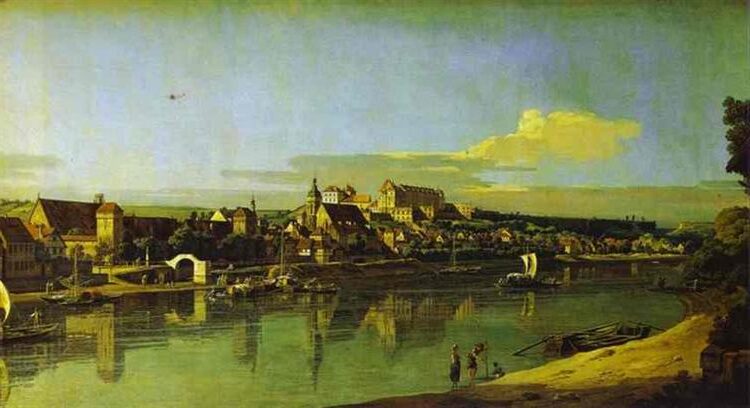
Pirna Seen from the Right Bank of the Elbe (c. 1750) by Bernardo Bellotto
In 1748, Bellotto received the prestigious title of Peintre judiciaire with the highest salary ever paid by Augustus to an artist.
For Augustus, Bellotto created magnificent large-scale views of Dresden and nearby Pirna. These works documented the baroque splendor of the Saxon capital with extraordinary precision.
Following his success in Dresden, Bellotto worked in Vienna and Munich for their respective courts. Later, he moved to Warsaw, where King Stanisław August Poniatowski commissioned him to paint detailed views of the Polish capital.
These paintings proved historically valuable after Warsaw’s destruction during World War II, aiding in the city’s reconstruction.
Style et influence artistiques
Bernardo Bellotto developed a distinctive artistic approach that set him apart from his contemporaries. His meticulous attention to architectural detail and unique handling of light created vedute (view paintings) that served as both artistic masterpieces and historical documents.
Comparison with Canaletto
Though initially trained by his uncle Canaletto, Bellotto quickly developed “a highly original style impossible to confuse with that of his uncle.” Early in his career, he was Canaletto’s “most gifted student” and “most adept imitator,” but this resemblance soon faded as he established his own artistic identity.
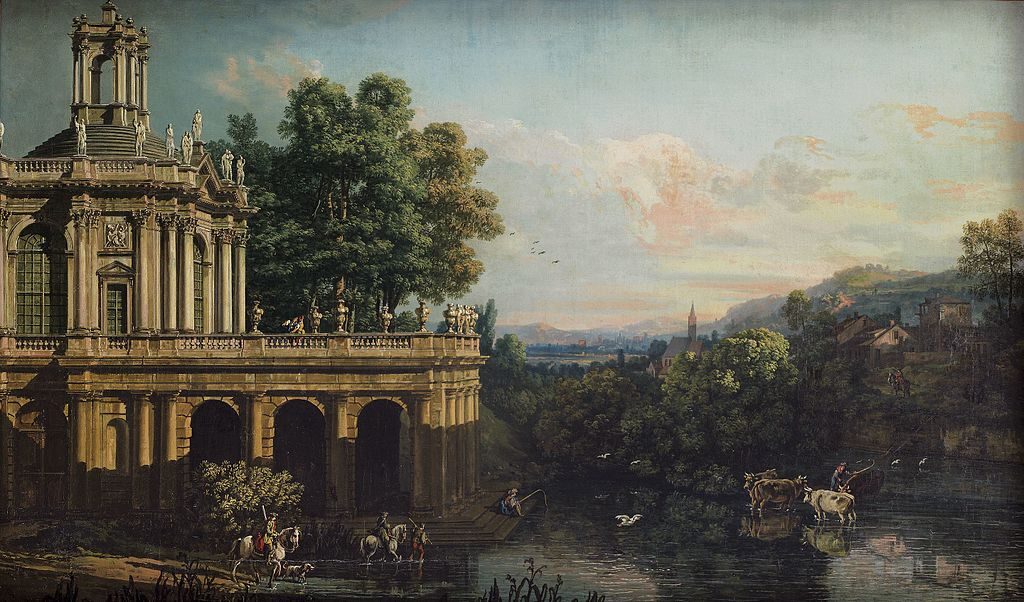
Architectural Capriccio with a Palace (1765) by Bernardo Bellotto
Where Canaletto often depicted Venice in warm, golden light, Bellotto preferred cooler, silvery tones in his palette. His perspectives became more precise and expansive than his uncle’s, particularly as he traveled through northern Europe.
Bellotto’s figures were rendered with greater detail, often appearing as integral parts of the urban landscape rather than mere staffage. This approach revealed his interest in the relationship between architecture and human activity.
Techniques et innovations
Bellotto’s style was characterized by “elaborate representation of architectural and natural vistas, and by the specific quality of each place’s lighting.” His technique featured extraordinary precision in depicting architectural structures, often using a camera obscura to achieve accurate perspective.
His innovation lay in how he captured the atmospheric qualities of northern European cities. Unlike the bright Venetian scenes, Bellotto mastered the rendering of overcast skies and diffused light typical of cities like Dresden and Warsaw.
His color palette evolved to include subtle grays, blues, and greens that captured the particular atmosphere of each location. This shift created a more somber, contemplative mood in his northern European works.
Bellotto’s paintings also incorporated remarkable textural variety, from smooth stone facades to rough-hewn streets, each rendered with careful attention to material qualities.
Legacy and Contributions to the Art World
Bellotto’s topographically accurate vedute proved valuable “as both art and history” and were later used to reconstruct war-damaged buildings in Warsaw. This practical application of his work demonstrates its enduring legacy beyond aesthetic appreciation.
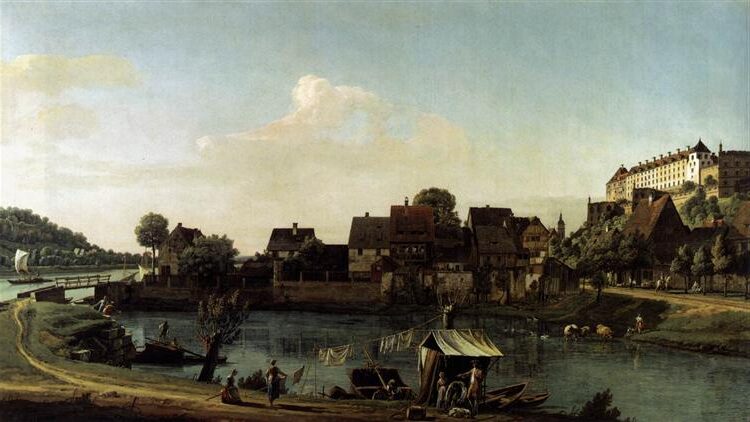
Pirna Seen from the Harbour Town (c. 1754) by Bernardo Bellotto
His paintings serve as crucial historical documents, preserving detailed records of 18th-century European urban landscapes that have since been altered or destroyed. The National Gallery of Art recognizes these works as important cultural artifacts.
Bellotto influenced the development of landscape and architectural painting throughout Central and Eastern Europe. His precise, documentary approach to cityscapes anticipated similar concerns in 19th-century art.
His work bridges the decorative Rococo style with more naturalistic approaches, incorporating the “lighthearted” sensibility of the period while grounding it in careful observation.
Œuvres et expositions importantes
Bernardo Bellotto created remarkable cityscapes that captured European urban landscapes with extraordinary precision and atmospheric detail. His most celebrated works now hang in prestigious museums around the world and continue to be featured in major cultural exhibitions.
Famed Series of Cityscapes
Bellotto’s most significant achievements are his meticulous views of northern European cities. His twenty-five paintings of Dresden stand as some of his most important works, showcasing his highly original style. These detailed cityscapes feature incredible architectural precision and distinctive silvery light.
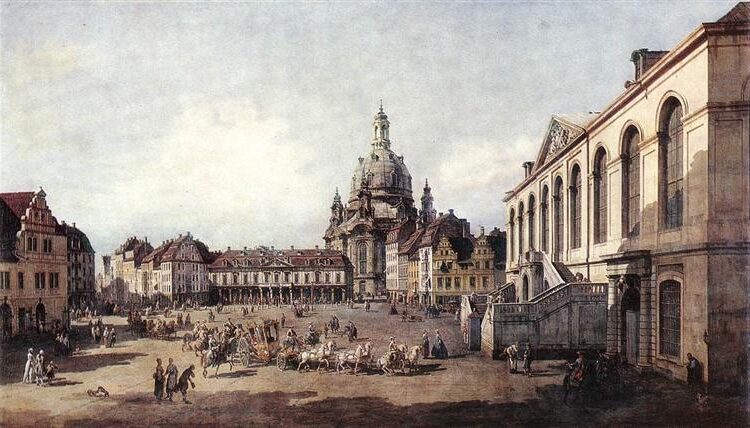
New Market Square in Dresden from the Jüdenhof (c. 1750) by Bernardo Bellotto
The artist also created remarkable series of Warsaw and Pirna. His fourteen views of Warsaw proved historically valuable, as they were later used to rebuild the city after World War II destruction.
Bellotto’s Vienna and Turin cityscapes demonstrate his mastery of vedute (detailed, large-scale topographical views). Unlike his uncle Canaletto, Bellotto developed a cooler color palette with precise architectural details and dramatic cloud formations.
Display in Prominent Museums
The National Gallery of Art in Washington, DC houses several important Bellotto works in its West Building. Visitors can view his paintings when entering from Constitution Avenue or Madison Drive entrances to the National Mall.
Other significant collections include Dresden’s Gemäldegalerie Alte Meister, which holds the largest assembly of his Dresden views. The Royal Castle in Warsaw displays his Warsaw paintings, while Vienna’s Kunsthistorisches Museum features his Austrian works.
The Metropolitan Museum of Art and the Victoria and Albert Museum also maintain notable Bellotto collections. His “The Fortress of Königstein from the North” at the National Gallery in London demonstrates his skill with dramatic perspectives and atmospheric effects.
Cultural Events Featuring Bellotto
Major retrospectives of Bellotto’s work have been organized by prominent museums worldwide. The Dresden State Art Collections frequently features special exhibitions highlighting his detailed cityscapes alongside contemporary documents.
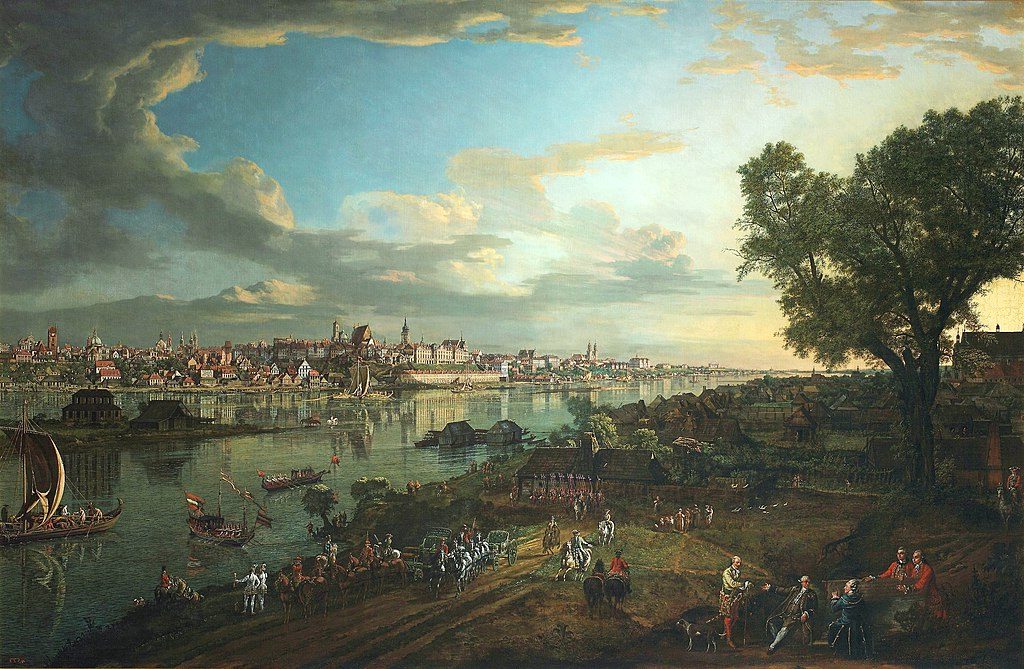
View of Warsaw from Praga (1770) by Bernardo Bellotto
In 2021, the National Gallery in London hosted “Bellotto: The Königstein Views Reunited,” bringing together his five paintings of the Saxon fortress. The exhibition highlighted his technical virtuosity and attention to detail.
Warsaw’s Royal Castle regularly hosts events celebrating Bellotto’s contribution to preserving the city’s architectural heritage. These exhibitions remain closed on major holidays like Christmas Day and New Year’s Day.
Bellotto’s works are also featured in thematic exhibitions exploring 18th-century European landscape painting and the veduta tradition across Italy and northern Europe.
Questions fréquemment posées
Bernardo Bellotto mastered the art of vedute (detailed cityscapes) throughout his career in Europe. His precise architectural renderings and distinctive lighting techniques made him a sought-after court painter in multiple European capitals.
What are some of the most famous works painted by Bernardo Bellotto?
Bellotto’s most celebrated works include his series of Dresden cityscapes, particularly “Dresden from the Right Bank of the Elbe.” These paintings showcase his extraordinary attention to architectural detail.
His “View of Warsaw from the Royal Castle” demonstrates his talent for capturing urban landscapes with remarkable precision. This painting became historically significant after World War II.
The “View of Vienna from the Belvedere” series represents another important collection in his portfolio, displaying his mastery of light and perspective.
How did Bernardo Bellotto’s style compare to that of his uncle Canaletto?
While Bellotto trained under his uncle Canaletto and initially adopted similar techniques, he developed a distinctly cooler palette with silvery-gray tones rather than Canaletto’s golden warmth.
Bellotto’s works feature stronger contrasts between light and shadow, creating more dramatic effects than his uncle’s paintings. His architectural details appear more precise and defined.
Unlike Canaletto, who often idealized his cityscapes, Bellotto tended toward greater topographical accuracy and documentary realism in his urban views.
What is the historical significance of Bellotto’s depictions of Dresden?
Bellotto’s Dresden paintings served as crucial references for the post-World War II reconstruction of the city after extensive bombing damage. His meticulous detail allowed architects to accurately rebuild historic structures.
These works also provide valuable historical documentation of 18th-century European urban design and architecture before modern developments changed these landscapes.
The paintings represent cultural treasures that preserved Dresden’s visual heritage through periods of war and destruction.
Which museums around the world house important collections of Bellotto’s artwork?
The Dresden State Art Collections (Gemäldegalerie Alte Meister) houses an exceptional collection of Bellotto’s Dresden views, displayed in the city he so famously depicted.
The National Museum in Warsaw maintains significant examples of his Warsaw cityscapes, including views of the Royal Castle and surrounding areas.
The Kunsthistorisches Museum in Vienna and the Manchester Art Gallery also possess notable Bellotto works. The National Gallery in London displays key examples of his early Venetian period.
How did Bellotto contribute to the preservation of European cityscapes through his art?
Bellotto’s photographic-like precision documented urban landscapes that would later undergo dramatic changes or destruction. His works serve as visual historical records of pre-industrial European cities.
His attention to architectural detail went beyond aesthetic concerns, capturing the everyday life and cultural context of these cities. This approach created comprehensive visual documents of 18th-century urban environments.
These paintings now offer invaluable insights for historians, architects, and preservationists studying European urban development.
In what ways did Bellotto’s time in Warsaw influence his artistic techniques and subject matter?
During his Warsaw period (1767-1780), Bellotto adapted his techniques to capture the unique quality of northern light. He developed a cooler palette suited to Poland’s atmospheric conditions.
He expanded his subject matter to include ceremonial scenes and events specific to the Polish court. This broadened his focus beyond pure architectural views, demonstrating his versatility as a court painter.
Bellotto’s Warsaw works show increased attention to human activity within urban settings. He depicted more figures engaged in daily life than in his earlier works.


